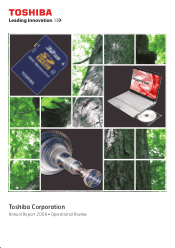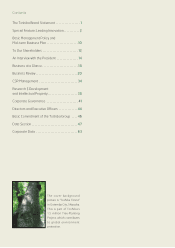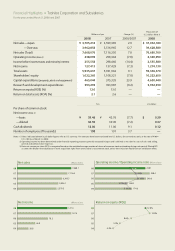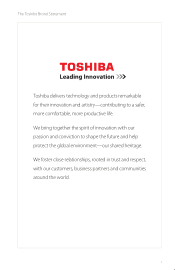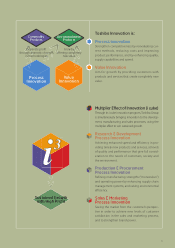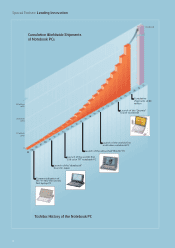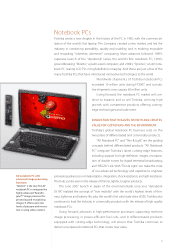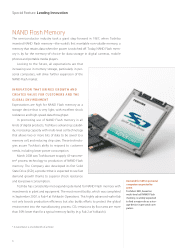Toshiba 2008 Annual Report Download - page 10
Download and view the complete annual report
Please find page 10 of the 2008 Toshiba annual report below. You can navigate through the pages in the report by either clicking on the pages listed below, or by using the keyword search tool below to find specific information within the annual report.
6
Special Feature: Leading Innovation
NAND Flash Memory
The semiconductor industry took a giant step forward in 1987, when Toshiba
invented NAND Flash memory—the world’s first rewritable non-volatile memory, a
memory that retains data when the power is switched off. Today, NAND Flash mem-
ory is by far the memory-of-choice for data storage in digital cameras, mobile
phones and portable media players.
Looking to the future, all expectations are that
increasing use in memory storage, particularly in per-
sonal computers, will drive further expansion of the
NAND Flash market.
INNOVATION THAT BRINGS GROWTH AND
CREATES VALUE FOR CUSTOMERS AND THE
GLOBAL ENVIRONMENT
Expectations are high for NAND Flash memory as a
storage device that is very light, with excellent shock
resistance and high-speed data throughput.
In promoting use of NAND Flash memory in all
kinds of digital products, Toshiba is advancing scalabil-
ity, increasing capacity with multi-level cell technology
that allows two or more bits of data to be saved to a
memory cell, and reducing chip sizes. These technolo-
gies assure Toshiba’s abilty to respond to customer
needs, including lower power consumption.
March 2008 saw Toshiba start to apply 43-nanome-
ter* process technology to production of NAND Flash
memory. The Company also developed its first Solid
State Drive (SSD), a product that is expected to see fast
demand growth thanks to superior shock resistance
and low power consumption.
Toshiba has consistently met expanding demand for NAND Flash memory with
investments in plant and equipment. The most recent facility, which was completed
in September 2007, is Fab 4 at Yokkaichi Operations. This highly advanced wafer fab
not only boosts production efficiency but also builds efforts to protect the global
environment into the manufacturing process: CO2emissions by floor area are more
than 50% lower than for a typical memory facility (e.g. Fab 2 at Yokkaichi).
Demand for SSD in personal
computers expected to
grow.
Toshiba’s SSD, based on
multi-level cell NAND Flash
memory, is widely expected
to find a major role as a stor-
age device in personal com-
puters.
* A nanometer is one billionth of a meter

